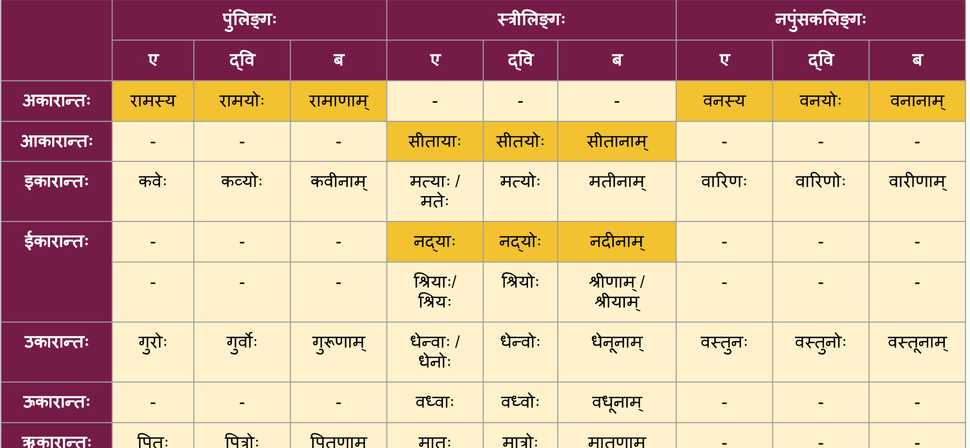
Sanskrit - Shashti Vibhakti
Let's talk about the shashti vibhakti pratyaya today. This is called the "possessive case" in English. As the name says, it is used to show possession ownership or belonging.
How do you form or identify shashti vibhakti?
Most common formation of words in shashti vibhakti ends with -sya (-स्य) for masculine and nuetral forms. They end with -या: for faminine forms. Example:
राम: -> रामस्य
सीता -> सीताया:
देवी -> देव्या:Commonly used words
Some special words we could remember and practice are:
स: -> तस्य सा -> तस्या:
भवान् -> भवत: भवती -> भवत्या:
First person and second person application
Remember that we praticed the sentence "What is your name?" earlier here? The word "your" is in shashti vibhakti. Do you remember the response to this question? When we say, "My name is ____", "My" is again in shashti vibhakti. So, what are the forms then?
अहम् -> मम, आवाम् -> आवयो:, वयम् -> अस्माकम्
त्वम् -> तव, युवाम् -> युवयो: , यूयम् -> युष्माकम्So are these the only forms? Of course not 😆
I learnt this from the Sanskrit class organised by sanskrit.today. A very helpful table was shared by the teacher to practice and remember the forms of shashti vibhakti. Sharing it here (full credits to sanskrit.today).
With this, let us practice a few simple sentences in shahsti vibhakti. Most of the sentences here are from the Sanskrit textbook from Samskrita Bharati
